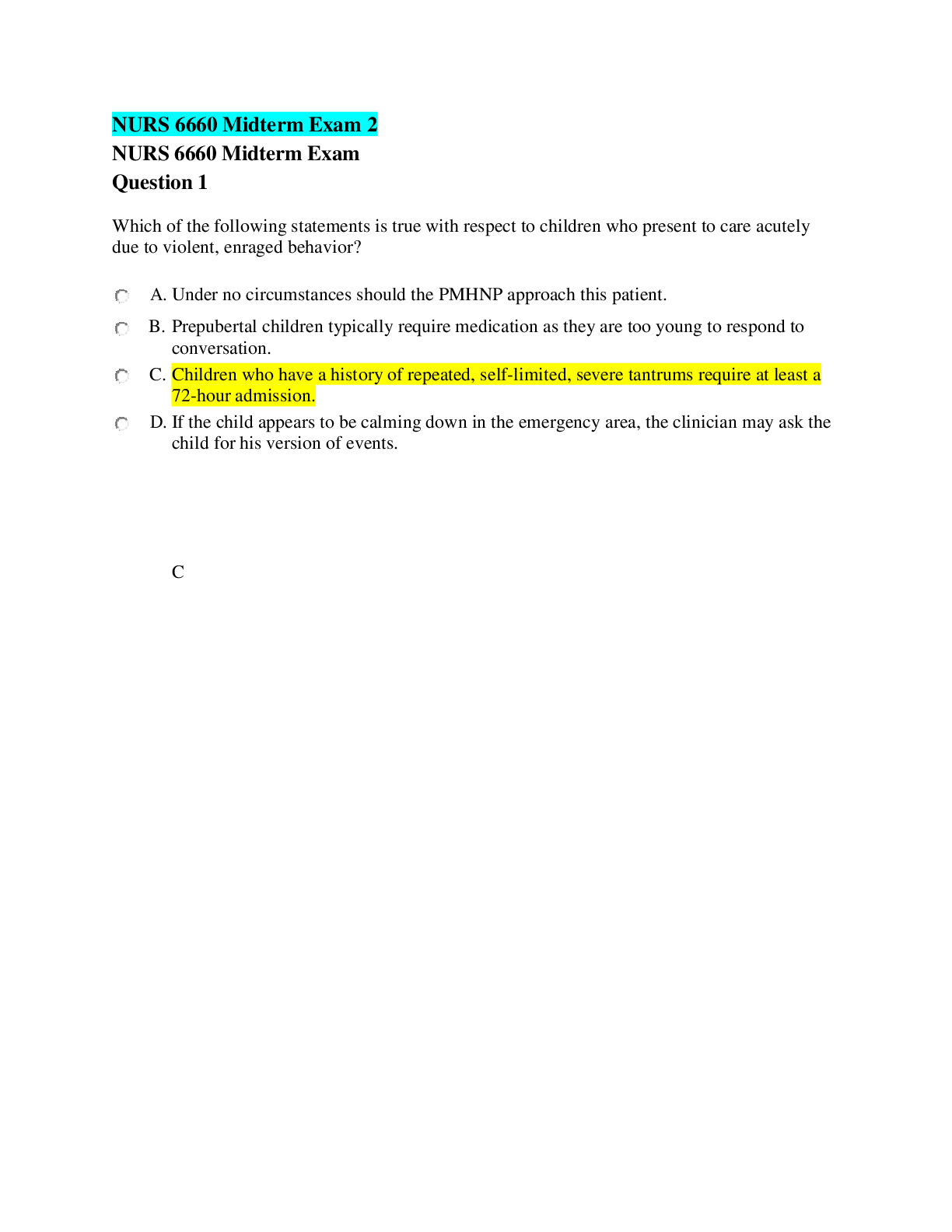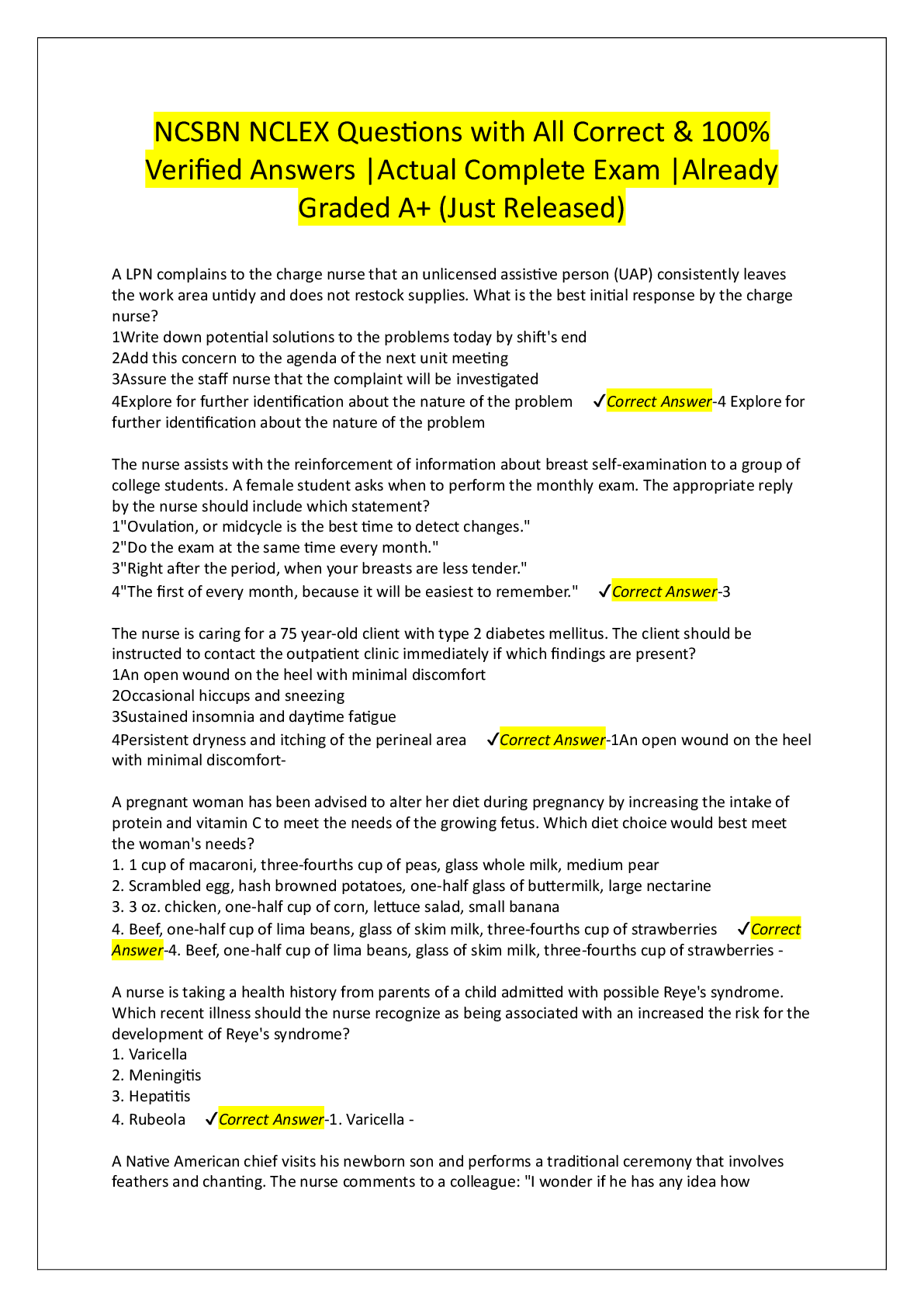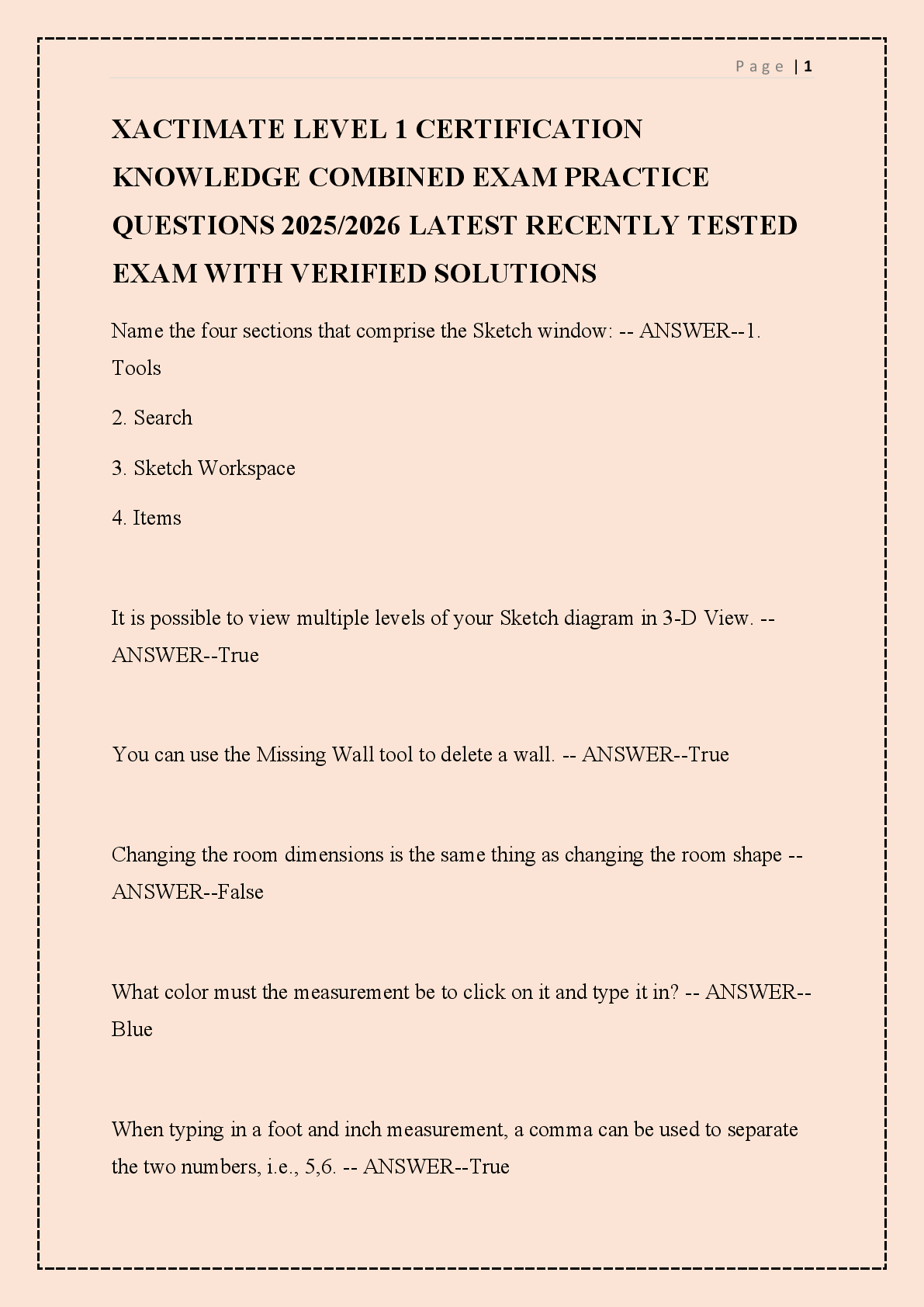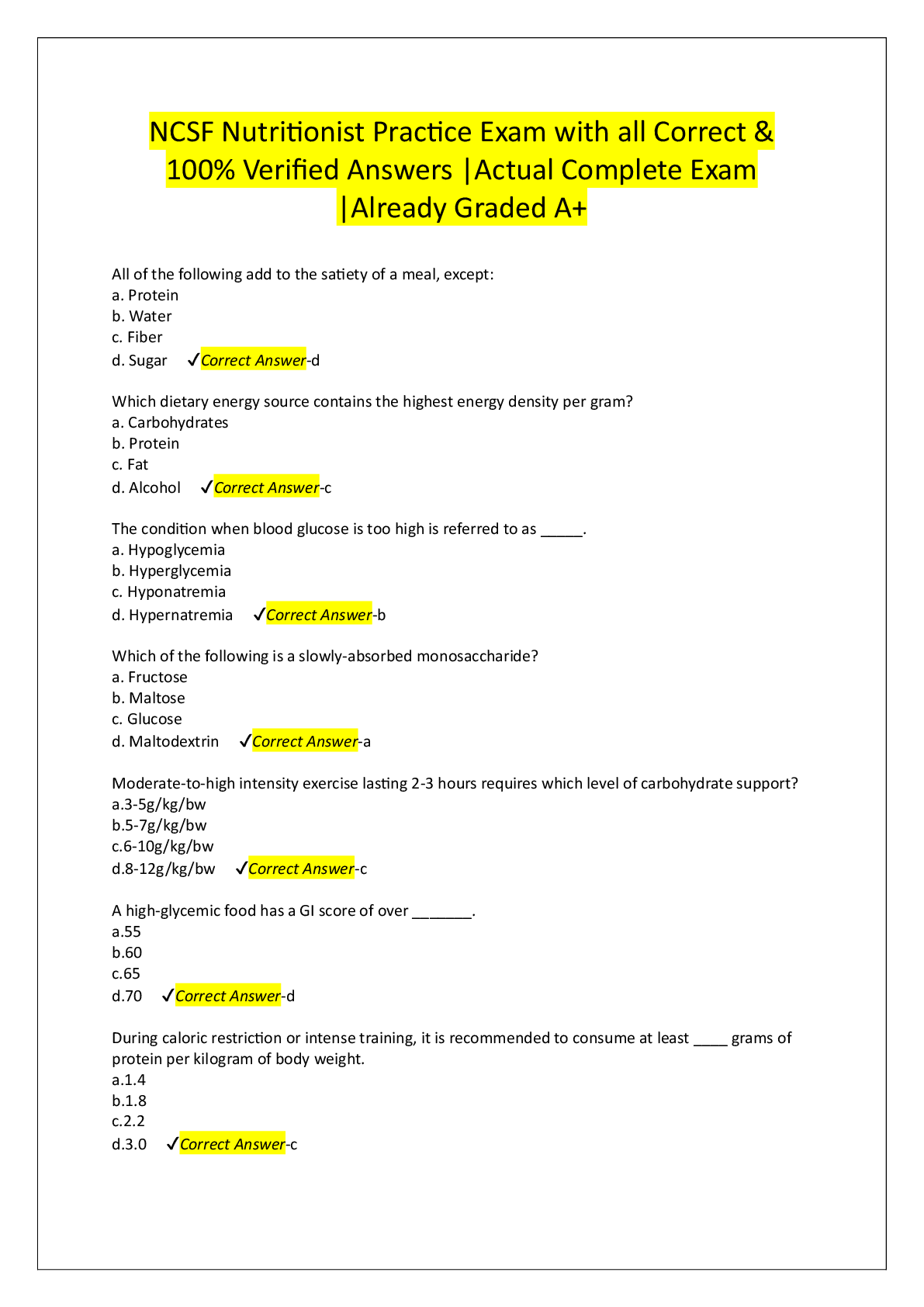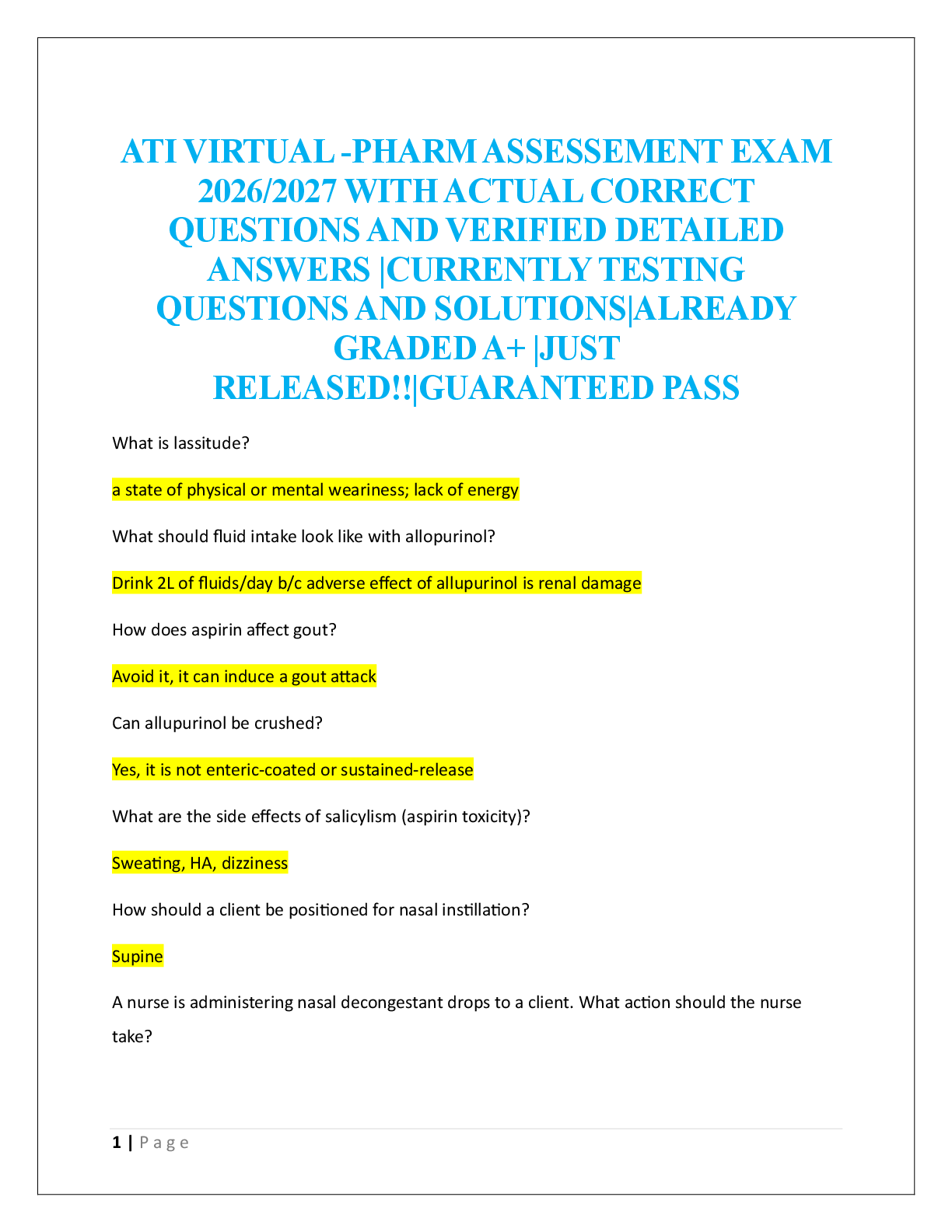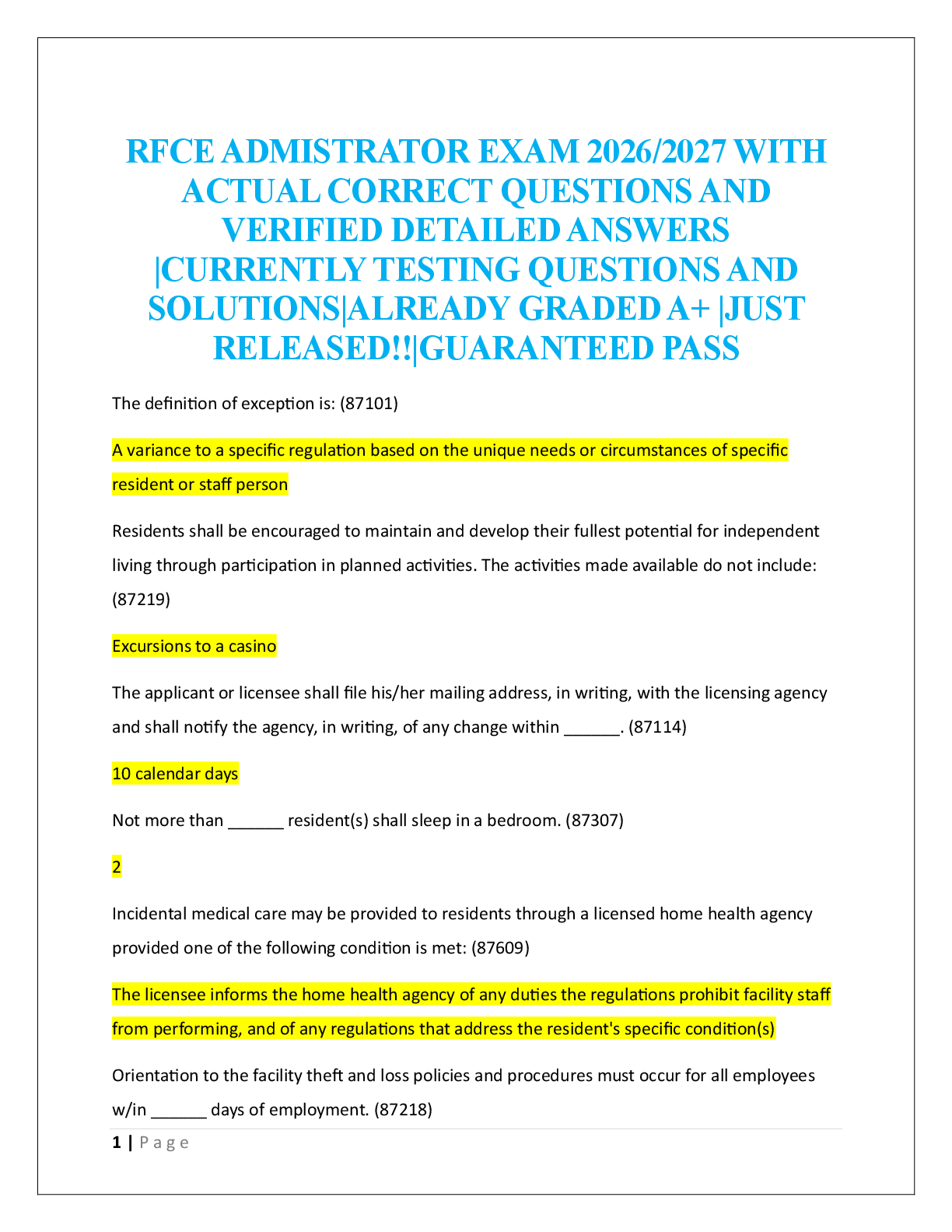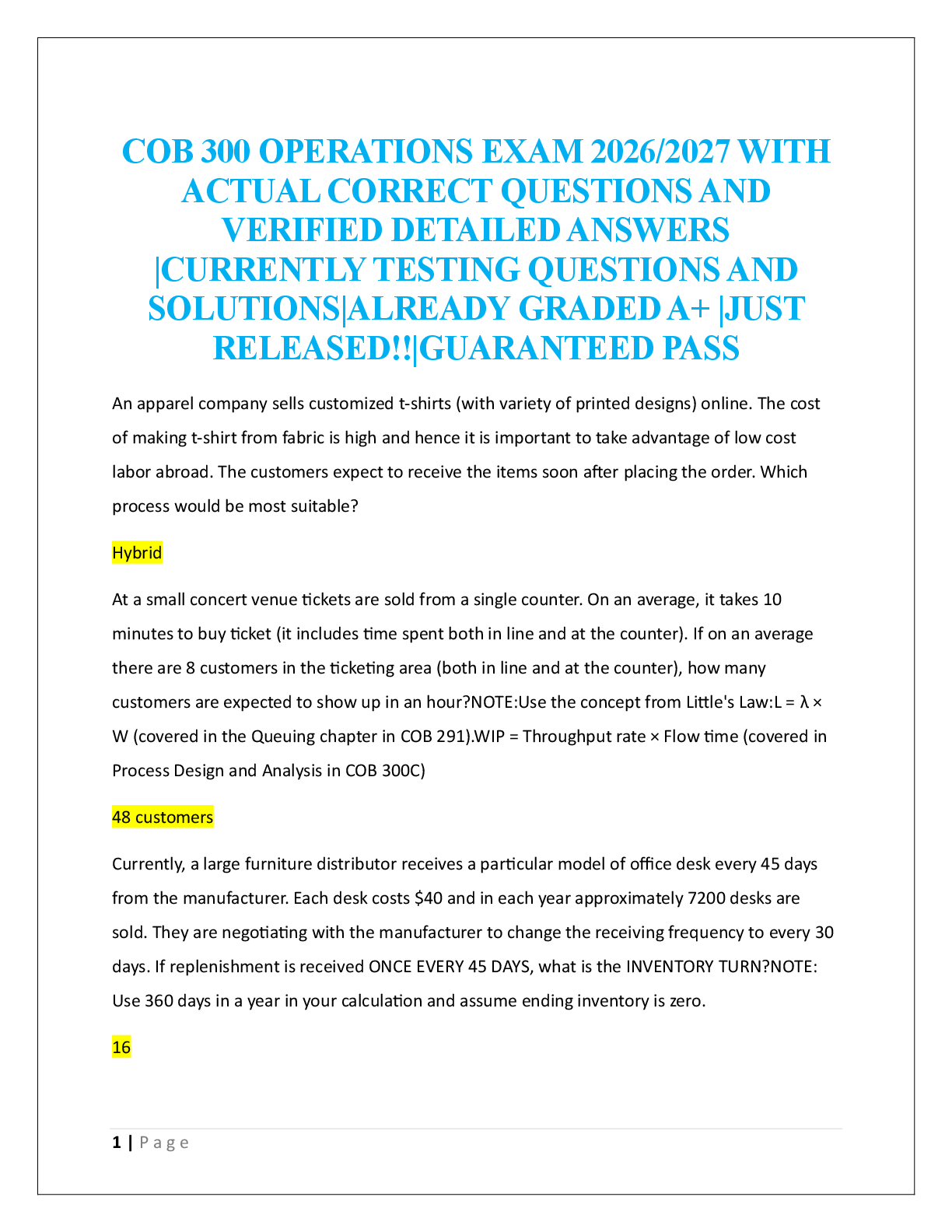BIOS 195 : Midterm Complete solutions, Latest 2019/20 - Al answers correct.
Document Content and Description Below
BIOS 195 Midterm 1. Question (TCO1) The level of organization in which different multiple types of tissues join together is called the_____. 2. Question (TCO1) The process by which unspecialized c ... ells become specialized cells is called 3. Question (TCO1) In a negative feedback control system, the response of the effector to a stimulus 4. Question (TCO1) Which of the following is an example of a positive feedback system in the human body? 5. Question (TCO1) Baroreceptors in the feedback system that control blood pressure sense changes in 6. Question (TCO2) _____ is an example of an element. 7. Question (TCO2) All atoms of an element have the same number of _____. 8. Question (TCO2) Isotopes of an element have the same number of _____ and different numbers of _____. 9. Question (TCO2) The first electron shell of an atom can hold a maximum of _____ electron (s). 10. Question (TCO2) The bond between oppositely charged ions is a (n) _____ bond. 11. Question (TCO3) Endocytosis is an example of 12. Question (TCO3) Which of the following is necessary for simple diffusion to take place? 13. Question (TCO3) Chromatin is found in the 14. Question (TCO3) Which of the following organelles are commonly referred to as the powerhouses of a cell? 15. Question (TCO3) The human somatic cells contain _____ chromosomes. 16. Question (TCO3) The protein synthesis process called translation requires 17. Question (TCO4) Which of the following is NOT an enzyme used to digest carbohydrates? 18. Question (TCO4) Which of the following organs is NOT an accessory structure of the digestive system? 19. Question (TCO4) The projection hanging from the posterior surface of the soft palate that helps prevent food and fluid from entering the nasal cavity during swallowing is the 20. Question (TCO4) Teeth are primarily composed of a bonelike substance called 21. Question (TCO4) The major events of chemical digestion and absorption of foods occur in the 22. Question (TCO4) The digestion of proteins into peptides starts in the 23. Question (TCO4) Which of the following structures has millions of fingerlike projections called villi lining the inner mucosal lining? 24. Question (TCO4) A vitamin produced by symbiotic bacteria in our large intestine is vitamin _____. 25. Question (TCO4) Chemical reactions in which simple substances are combined into more complex substances, usually with the addition of energy, are collectively called 26. Question (TCO4) Which of the following is NOT a common product of the Krebs cycle? 27. Question (TCO4) Glycogen breakdown occurs when 28. Question (TCO4) Excess carbohydrates in the diet are converted into 29. Question (TCO5) Which of the following types of tissues is often ciliated? 30. Question (TCO5) Cartilage is classified as a (n) 31. Question (TCO5) Which type of muscle is branched and fastened to adjacent muscle cells with intercalated discs? 32. Question (TCO5) Which of the following types of tissue contains neuroglia cells? 33. Question (TCO5) Blood is classified as a (n) 34. Question (TCO6) All of the following are normal functions of the skin except 35. Question (TCO6) The only layer of the epidermis that contains stem cells capable of continued cell division is the 36. Question (TCO6) Exocrine glands that secrete oil directly onto hair follicles are called 37. Question (TCO6) The cuticle of the nail consists of 38. Question (TCO6) A burn that penetrates the entire epidermis and some of the dermis is a 39. Question (TCO5) Which of the following are NOT long bones? 40. Question (TCO5) The shaft of a long bone is called the 41. Question (TCO5) Osteogenic cells 42. Question (TCO5) The adult human skeleton typically consists of 43. Question (TCO5) The anatomical term for shinbone is 44. Question (TCO2) Which of the following is a common second messenger used in signaling pathways active by water-soluble hormones? 45. Question (TCO2) Antidiuretic hormone (ADH) and oxytocin are secreted from the 46. Question (TCO2) Calcitonin is a hormone released by the parafollicular cells of the 47. Question (TCO2) Which of the following hormones is or are responsible for the fight-or-flight response? 48. Question (TCO2) The cells in the pancreatic islets that secrete insulin are called 49. Question (TCO2) Cushing’s syndrome is due to hypersecretion of 50. Question (TCO2) Which of the following pituitary hormones controls adrenal cortex activities? 51. Question (TCO2) Sally is 10 years old and has just been diagnosed with diabetes mellitus. Her grandmother (who is 65 years old) has also been diagnosed with diabetes. Sally is having a hard time understanding why she needs injections whereas her grandmother is able to control her diabetes with just diet and oral medication. Explain to Sally why their treatments are different based upon cellular and glandular differences in their two conditions. 52. Question (TCO3) Describe the process of mitosis. When does DNA replication occur? 53. Question (TCO3) You exercise and your muscles generate excess heat. What are the major processes that are used by your body to eliminate this waste heat? 54. Question (TCO3) Explain the differences and similarities between true ribs, false ribs and floating ribs. [Show More]
Last updated: 3 years ago
Preview 1 out of 4 pages
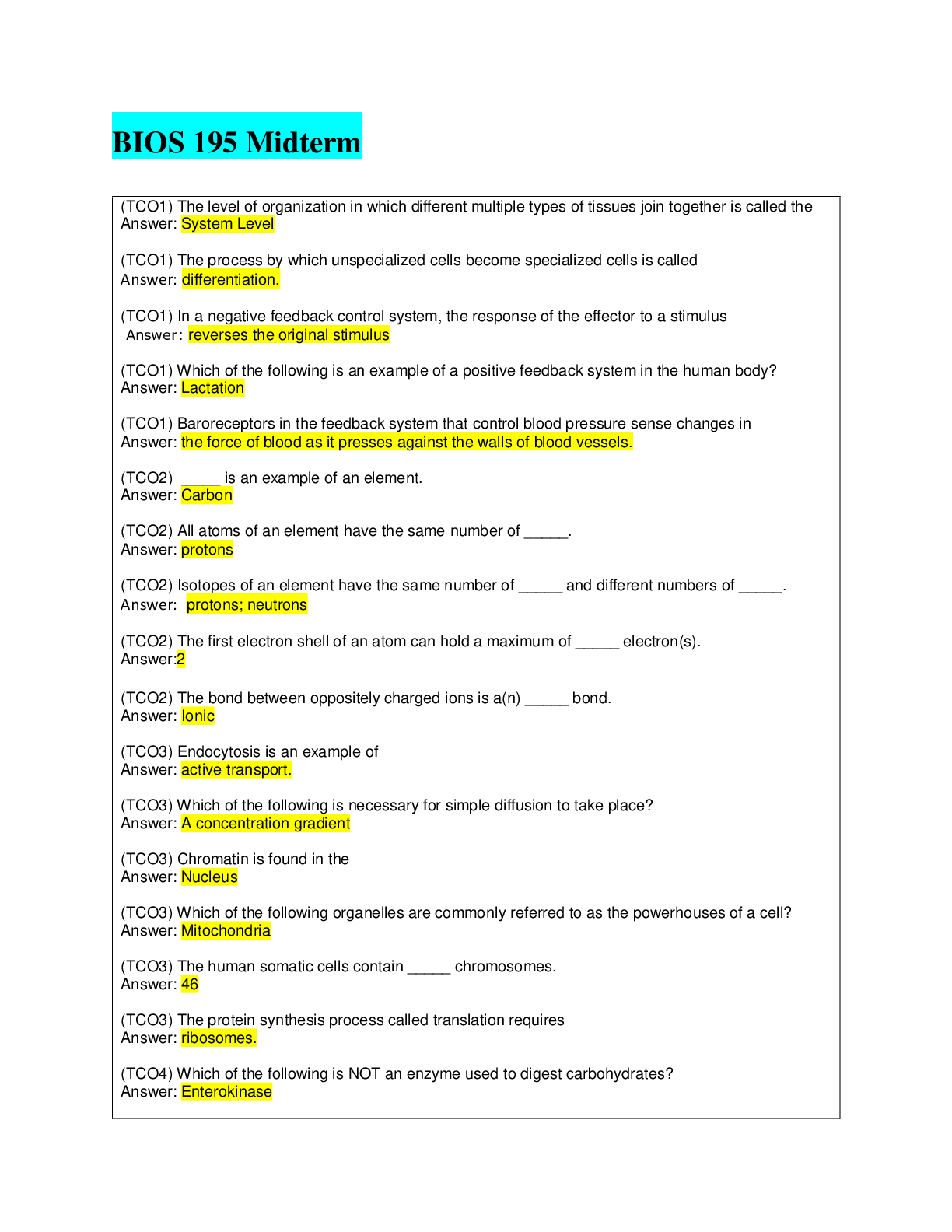
Buy this document to get the full access instantly
Instant Download Access after purchase
Buy NowInstant download
We Accept:

Reviews( 0 )
$11.00
Can't find what you want? Try our AI powered Search
Document information
Connected school, study & course
About the document
Uploaded On
Mar 26, 2020
Number of pages
4
Written in
All
Additional information
This document has been written for:
Uploaded
Mar 26, 2020
Downloads
0
Views
81



